Interested in finding family-friendly outdoor adventures in and around Nanaimo, BC? Look no further! This post explores easy adventures in Strathcona Provincial Park, Pipers Lagoon, Rathtrevor Beach, Jack Point/Briggs Park, Cumberland Potholes and Cumberland Chinatown with links to the McLean Mill National Historic Site. It’s all inspiration for a little Vancouver Island family adventure time!
Disclosure: This post contains affiliate links. If you buy something from one of our affiliates, we receive a small commission at no extra charge to you. Thanks for supporting our blog!
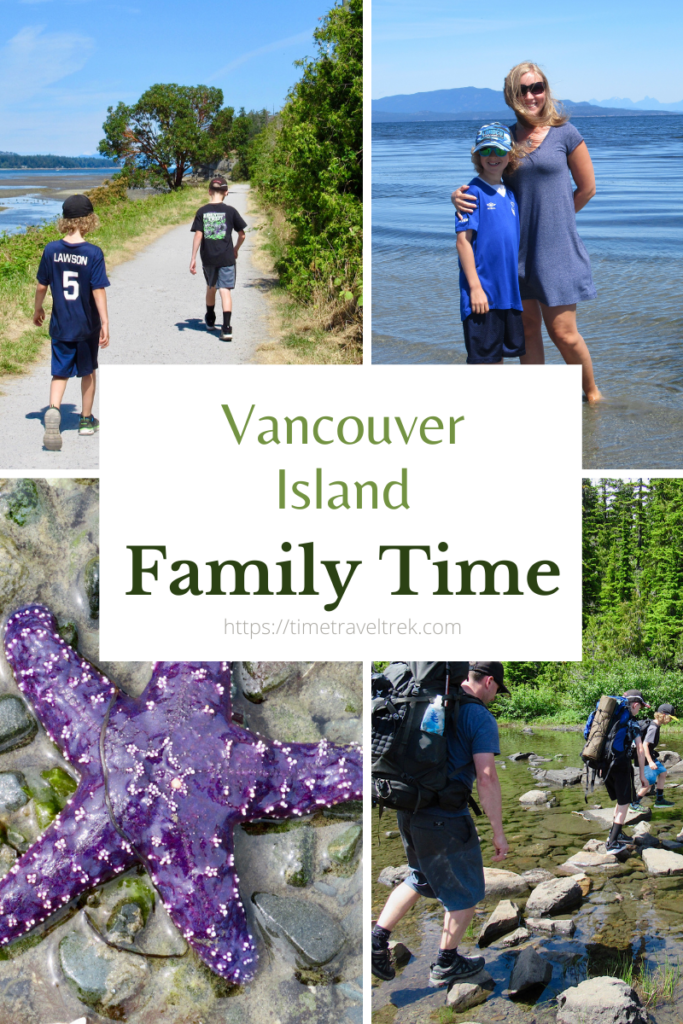
Table of Contents
Five Days of Vancouver Island Family Adventure Time
I don’t get to spend nearly enough time with my Vancouver Island family. When I do, you can bet we don’t waste any time indoors. Outdoor adventures with a dash of historical flavour are always on the agenda. This trip had it all!
Day One: Hiking Forbidden Plateau
Our greats – as in nephews – and their dad were on a backpacking trip in Strathcona Provincial Park on Forbidden Plateau when we arrived. The area has rich history and is steeped in folklore. According to one rather fanciful legend, the plateau was a safe haven for native women and children to hide from enemy attack. But on one occasion, the women and children mysteriously disappeared without a trace. Evil spirits were blamed. Travel to the plateau was forbidden. According to a post on the Strathcona Wilderness Institute Society website (link at bottom), it’s not an authentic legend, but rather a good yarn.
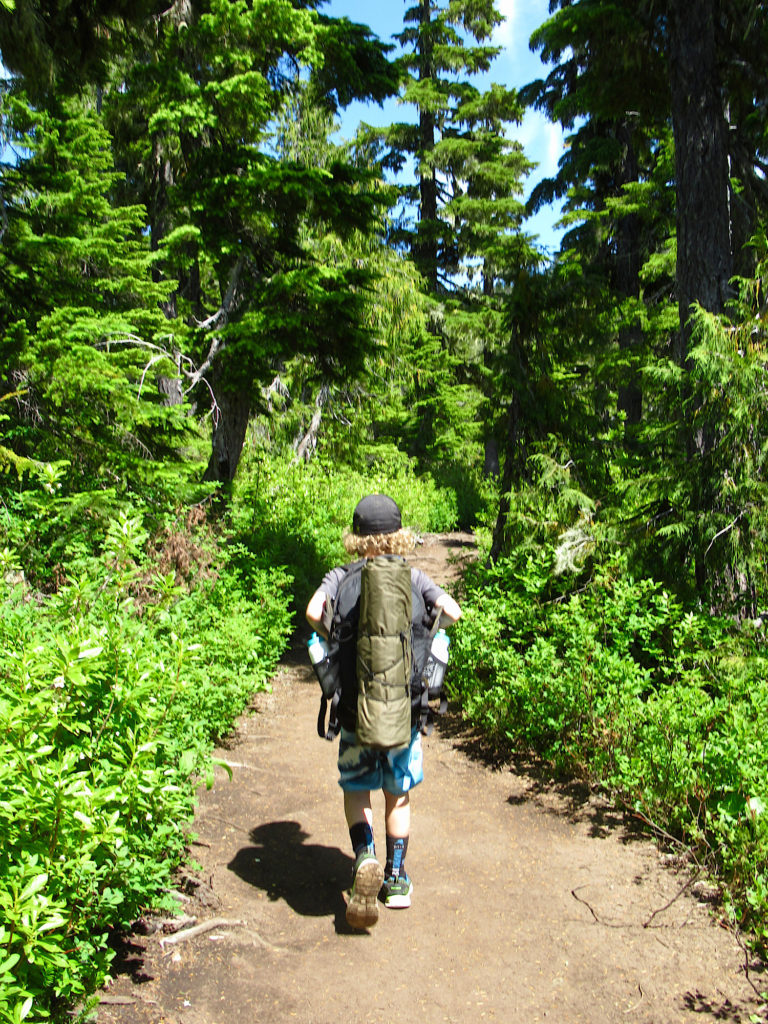
Enjoying Paradise
There’s certainly nothing forbidden about the plateau today. Hundreds of hikers and backpackers enjoy the areas charms. We day hiked in to meet our backpackers along the Helen MacKenzie/Battleship Lake Loop trail – an easy 8-kilometre circuit with little elevation gain.
Paradise Meadows bloomed with subalpine wildflowers. When you go, be sure to pack along this excellent identification guide. Footsteps echoed on wooden boardwalks. The sun shone as dogs and kids frolicked in the lakes. Whether in for an overnight adventure or simply for the day, Forbidden Plateau is an inviting place for a little Vancouver Island family adventure.
Heading northward on the island? Check out our post Things to do in North Vancouver Island!
Day Two: Exploring Pipers Lagoon Park and Shack Island
Nanaimo is famous for its waterfront parks – and Pipers Lagoon is one I’d never seen before. Pipers Lagoon was originally called Page’s Lagoon after local landowner Louis Page. The Pipers family bought the waterfront property in 1917. There was a sheep farm and then a sawmill on the site, but fortunately someone had foresight. It was never developed for housing. The city of Nanaimo acquired the property in 1983.
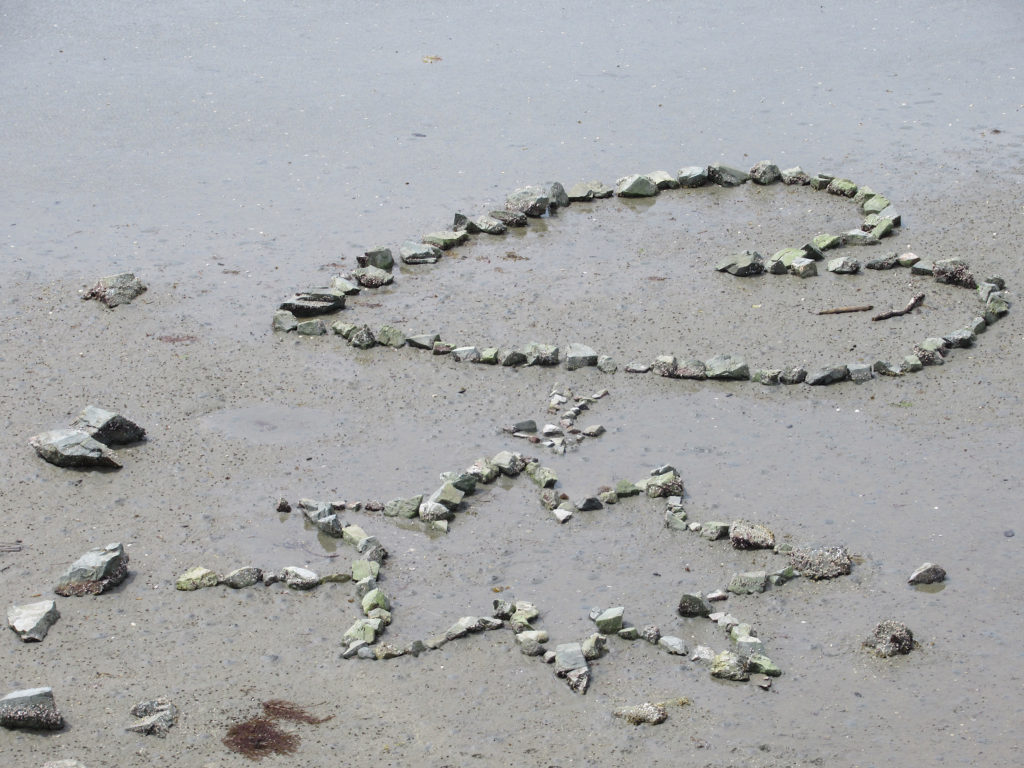
Built out on a rocky headland, this small park offers winding trails, excellent beachcombing opportunities and superb seaside viewpoints. We scrambled up the little rocky bluffs, along rugged little paths, smiling as a man walked by with a parrot on his shoulder. My niece and I laughed out loud when the parrot turned back to look at us and said, “I love you,” as the man continued walking away. Lunch was munched sitting a huge driftwood log in the sunshine.
Investigating Shack Island
With a low tide, we were actually able to continue on past the end of the park and walk across the oysterbeds to Shack Island. There’s a great article highlighting the complete history behind this ragtag collection of cottages. Today’s dwellings date back to the Depression-era when this tiny island became a popular fishing location. Anglers built shelters to live in during summer months. Over time a cottage community was established.
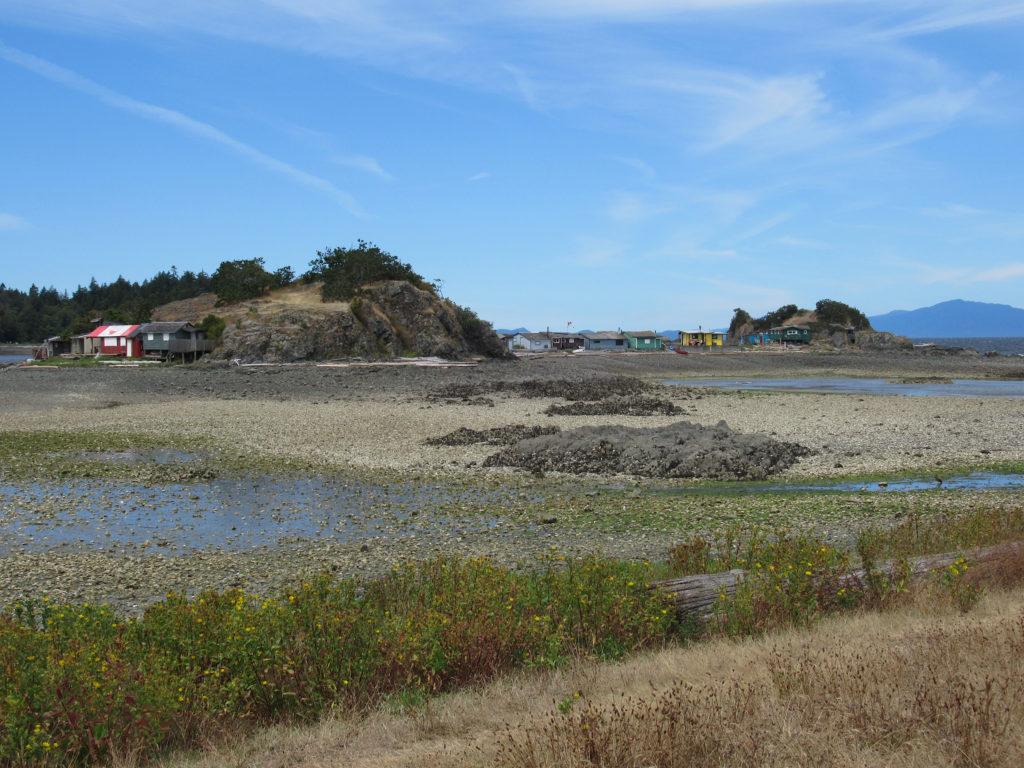
Lucky descendants of those original anglers keep the spirit alive. Colourful paint in hues of yellow and blue brings the shacks to life. Flags whip in the wind and on one porch a fiddler is striking up a tune. For a moment I had to think hard about which coast I was on!
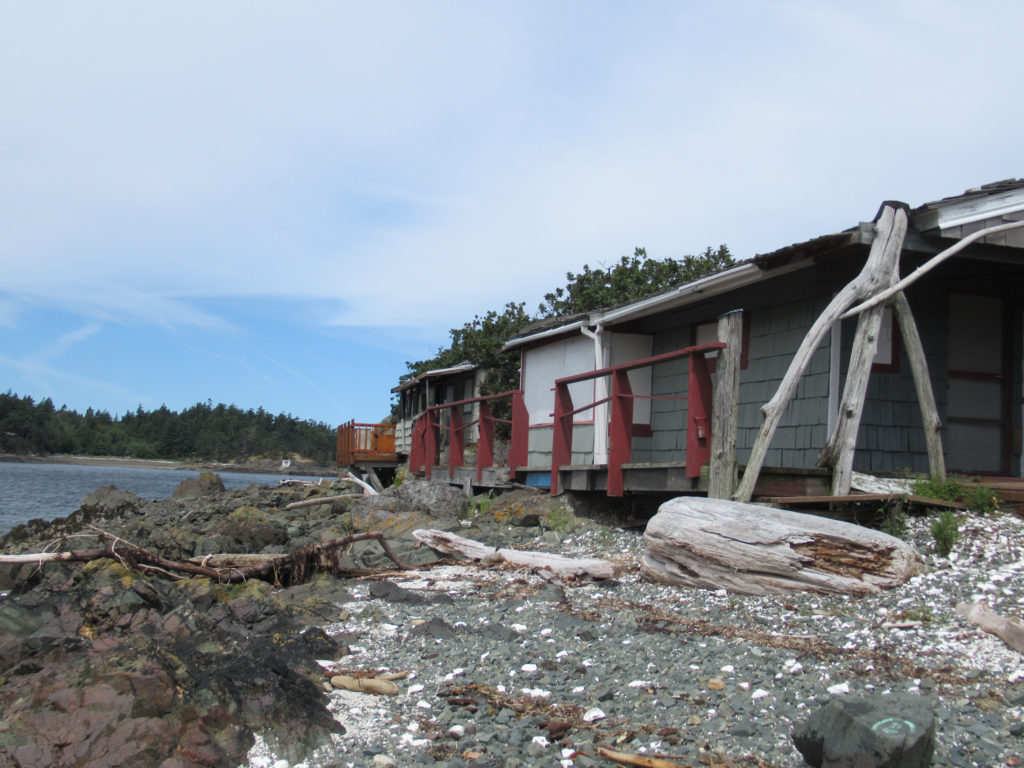
Day Three: Rathtrevor Beach
Rathtrevor Beach Provincial Park is situated about half an hour drive north of Nanaimo. Driving in through massive old growth trees, we parked in the gravel lot and walked to the beach. At low tide – and yes, we hit it again without even consulting the tide charts – the ocean drops back almost a kilometre.
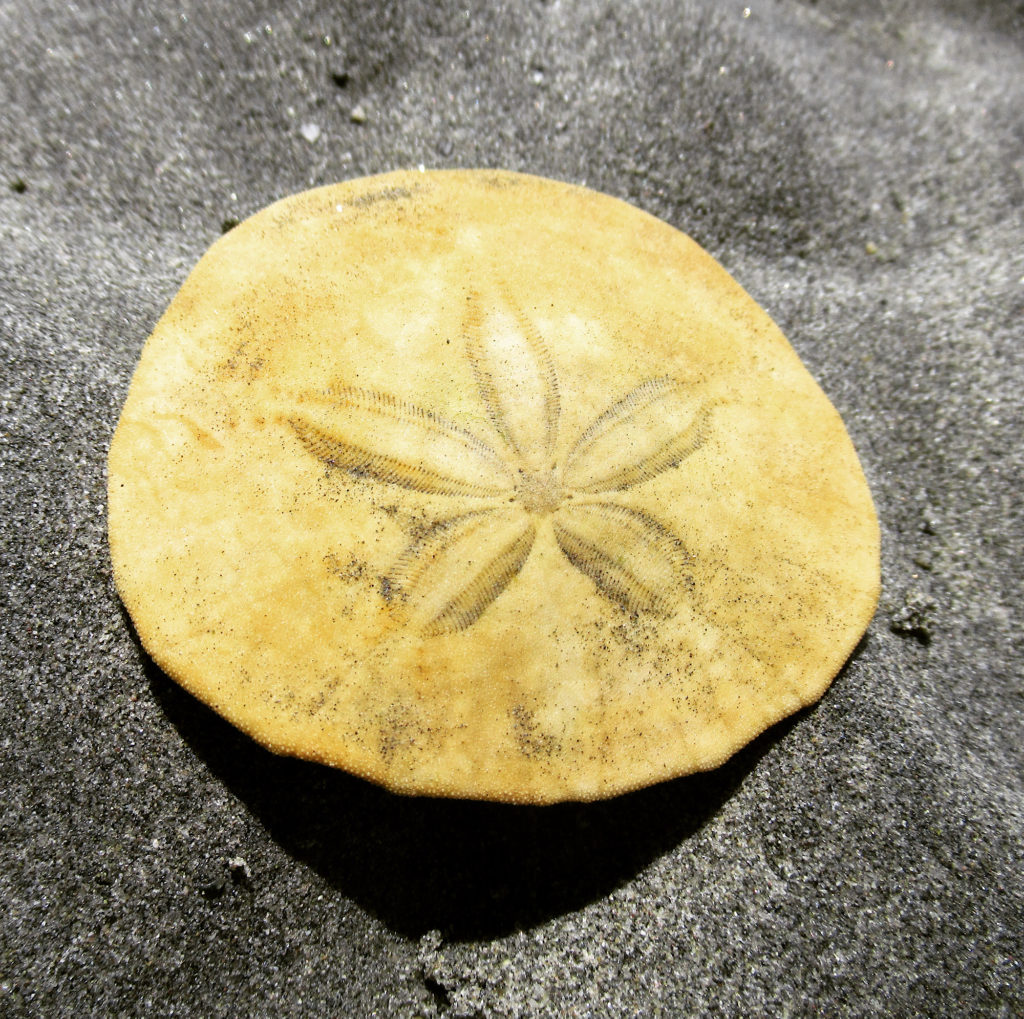
The wide sandy beach is backdropped by views of Georgia Strait and hazy mainland mountains. Exploration of tide pools and other sea treasures is endless. It’s a popular spot for families for everything from picnics to sandcastle building to kite flying. And it’s easy to while away a day. Families having been enjoying the endless appeal of Rathtrevor Beach for decades.
Read more about camping at Rathtrevor Park – it also includes Elk Falls Provincial Park in Campbell River.
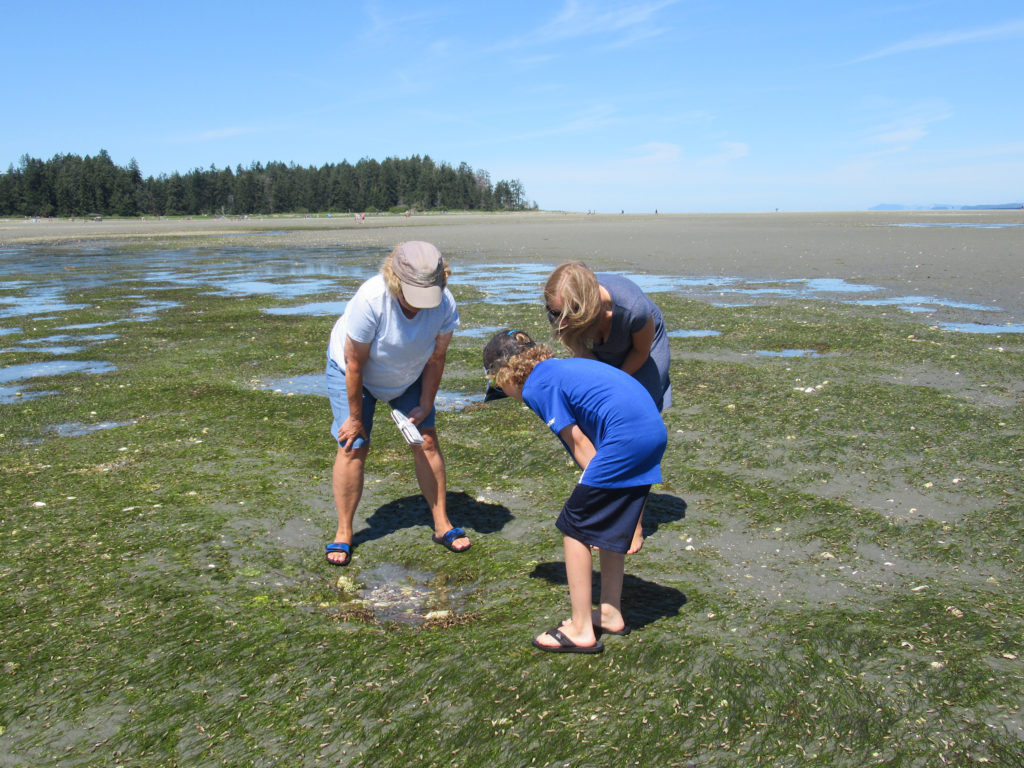
Beyond the Beach
While most families come for the beach and camping, there is a wealth of history in the park. William Rath was an Irishman who came to Canada in search of gold with his younger brother, George. After George passed away, William headed back to Ireland. At 52, he married 20-year-old Elizabeth Talbot and they returned to Canada with their new baby in 1866, choosing to homestead here on Vancouver Island.
The Raths built a simple log cabin and created a family farm. Sadly, William died in 1903. Elizabeth was left to raise their five children. She developed the land and began operating it as a campground called Rathtrevor. The industrious Raths kept the property in the family. Another new family home was built in 1942. Twenty-five years later, the property became Rathtrevor Beach Provincial Park. The Rath family home is now the Nature Centre in the park. There are also remains of the barn, bits of fencing, fruit trees and hay meadows. I’m sure Elizabeth and William would be happy knowing that their story lives on today. If you’d like to learn about the Raths, be sure to pick up a copy of “Tales of Rathtrevor Beach: Legacy of a Family” from the Nature Centre bookstore.
Day Four: Jack Point and Biggs Park Walk
If you’ve ever taken BC Ferries from Duke Point, you have driven past this park. If you’re like me, you probably never knew it existed. This is where adventures with a local pay off big time!
Biggs Park runs parallel to the Duke Point ferry terminal. The 5-kilometre (return) hiking trail starts with a dark but short underpass. It opens to bright views of the Nanaimo River estuary. Downtown Nanaimo sits quietly across the bay. Dozens of great blue heron fish along the water’s edge. Bald eagles perch in Douglas fir trees. Twisted, red and peeling Arbutus and a unique carved sandstone shoreline provide endless photo opportunities.
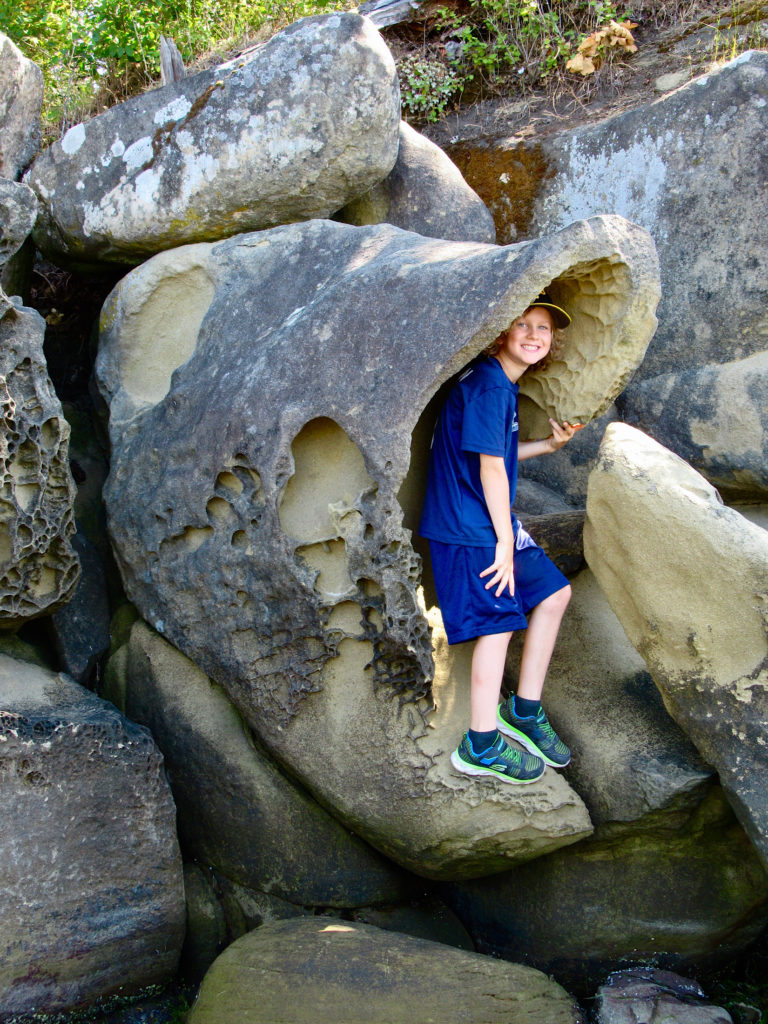
We picnicked at the point, watching the ferries come and go and enjoying the views across to Gabriola Island. No sea lion or orca sightings, but the boys did find the remnants of a long-gone garter snake – much to their delight! Jack Point is supposed to be an amazing location to watch the sunset, but the stairs and at times uneven pathway might be a bit of challenge with kids if you attempt to navigate them after dark.
Enjoy ferry travel? Consider a 16-hour BC Ferries Inside Passage adventure!
What’s in a Name?
Biggs Park is named after John Biggs. John came to Vancouver Island from England aboard the Princess Royal in 1854. He was one of 24 miners and their families who came under contract to the Hudson’s Bay Company. After he finished his contract, John settled on the land near today’s Duke Point. Jack Point is named after Jack Doholt. Jack lived on the point for 40 years. He grew hay and raised milk cows for the Nanaimo market until his death in 1905.
Day Five: Curious About Cumberland Potholes
Cumberland Potholes can’t be missed, someone suggested. Of course, we didn’t know exactly where they were, but it didn’t sound too difficult to find. Cumberland Potholes – a.k.a. Perserverance Bowls or China Bowls – are a short 2-kilometre stroll from the parking area. That is if you know where to park! We added another kilometre or so by parking down near the Cumberland Jump Park.
The little bit of extra distance was flat and easy, but if you want to keep it short for any little ones in your family, park at the corner where Sutton Road becomes Comox Lake Road. If it’s too busy, you can also park at the Cumberland Recreation Centre at the corner of Dunsmuir Avenue and Sutton Road. Regardless of where you park, you’ll head past a yellow gate into the hiking/biking trail system (link to map below).
We passed a young rider pushing his mountain bike with a flat tire down the hill on Davis Main Road – a wide gravel roadway. When we asked if we were on the right path for Cumberland Potholes, he gave a blank stare before the light came on.
“Oh, you mean the holey rocks. Yup, keep going ‘til the bridge.”
Climbing up the short hill past a water treatment plant, we reached the creek and followed the root-filled path to the potholes. Carved perfection with brilliant blue waters cascading and pooling – and such an easy walk to get there. It’s the perfect Vancouver Island family-friendly mini-adventure. Don’t forget your camera!
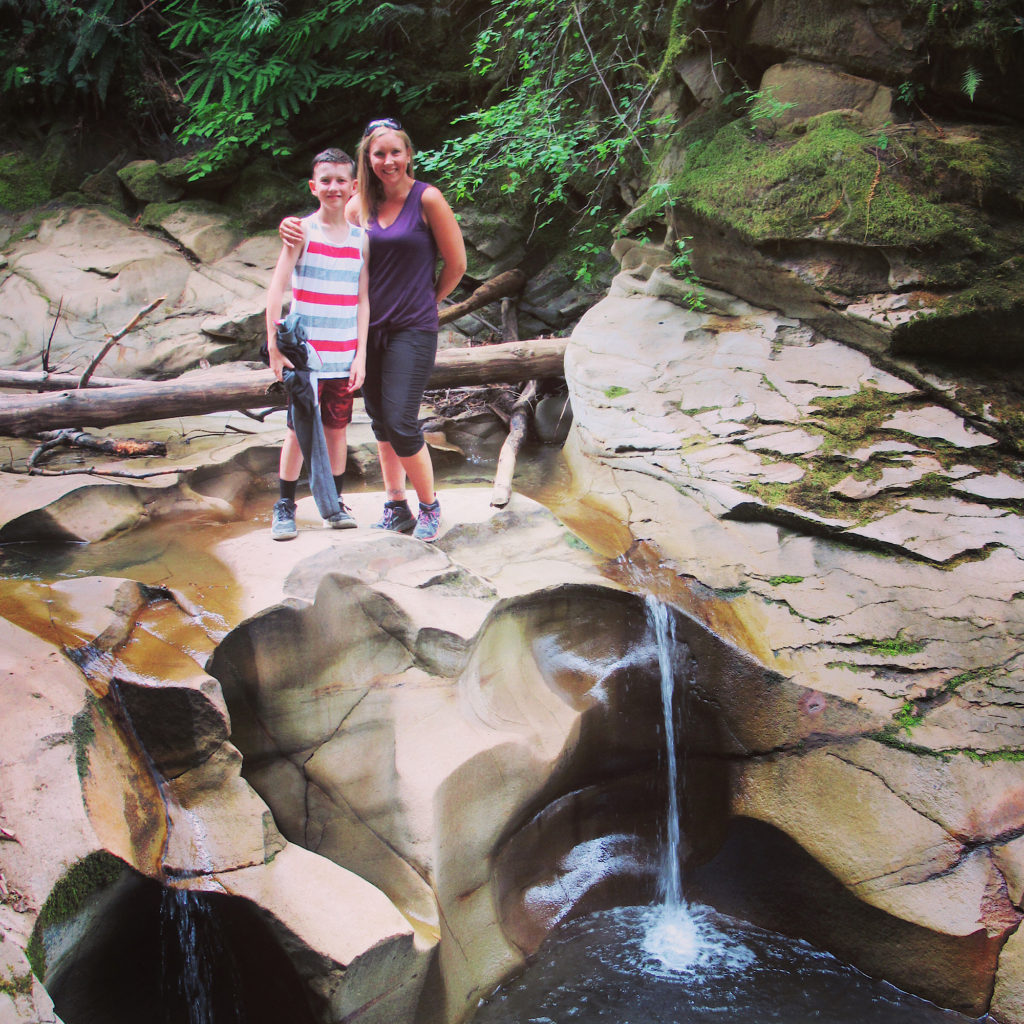
Side Trip to Cumberland’s Historic Chinatown
The potholes offered a bit of insight into the geology of the area. Our history lesson came with a little side trip to the site of Cumberland’s historic Chinatown. It’s located just a short way up on Comox Lake Road.
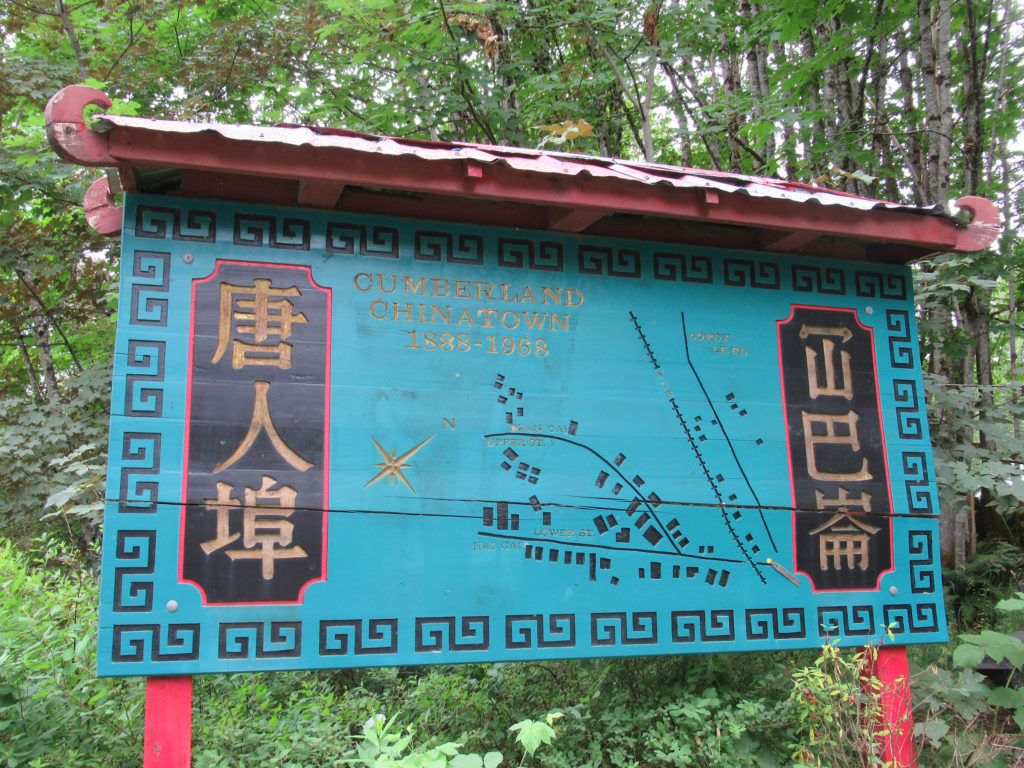
Cumberland was a coal town in its heydays. Chinese and Japanese workers came to work in the mines and build the railway to take the coal to the seaport at Union Bay. A swampy section of wetlands was drained. Homes and businesses were built. It became one of Canada’s largest Chinese communities in the early 1920s. Ten years later, the Great Depression arrived and mining jobs for Chinese workers no longer existed.
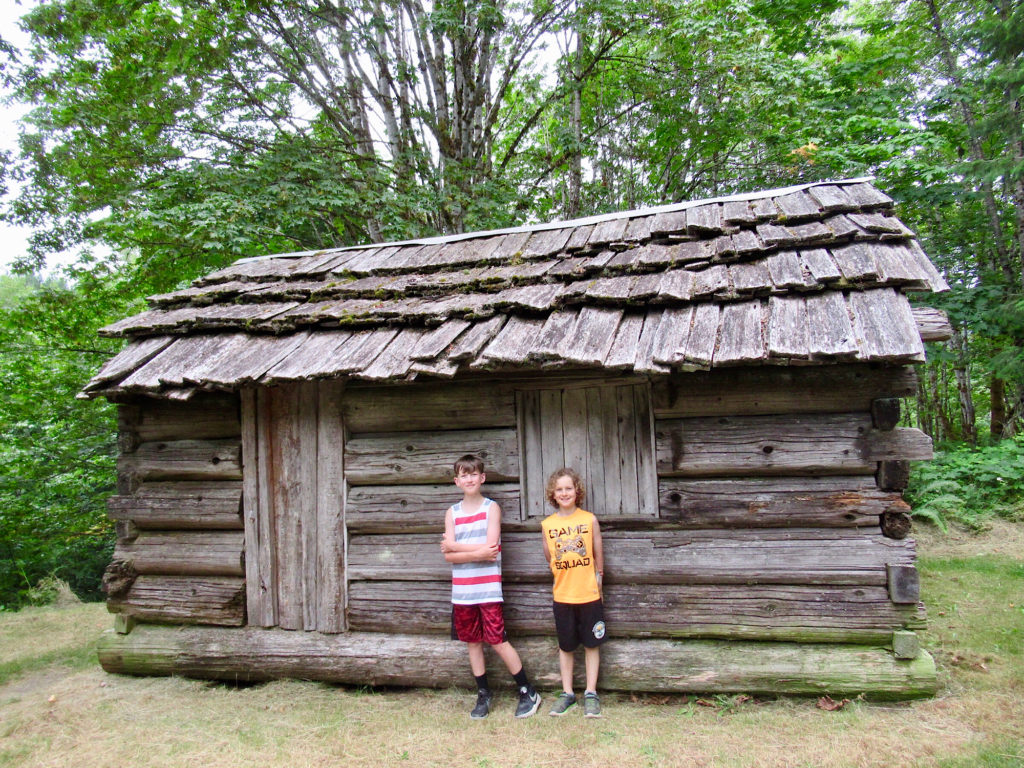
The community faded away. Buildings fell into disrepair. Attempts to save remaining structures for a historical tourist attraction failed. In 1968, all of the buildings were razed except for Jumbo’s cabin. We walked past Jumbo’s cabin, reading interpretive signs along the way and trying to see the once-bustling community. I’m still curious how the elderly Chinese gentleman named Hor Sue Mah got the name Jumbo. If you know, please comment below!
Bonus Day: Mclean Mill Nat’l Historic site
There are so many family-friendly things to see and do in and around Nanaimo. If you’ve extra time on your hands, one last recommendation is to take a drive over to Port Alberni to visit the McLean Mill National Historic Site. It was a family-run lumber company that began in the 1920s. Wander the site and you’ll find over 30 buildings and structures – much of it original. Follow the path through the forest from the visitor centre for snapshots of camp life, logging, sawmilling and transportation. Self-guided tour maps are available. Admission is free, although donations are appreciated.
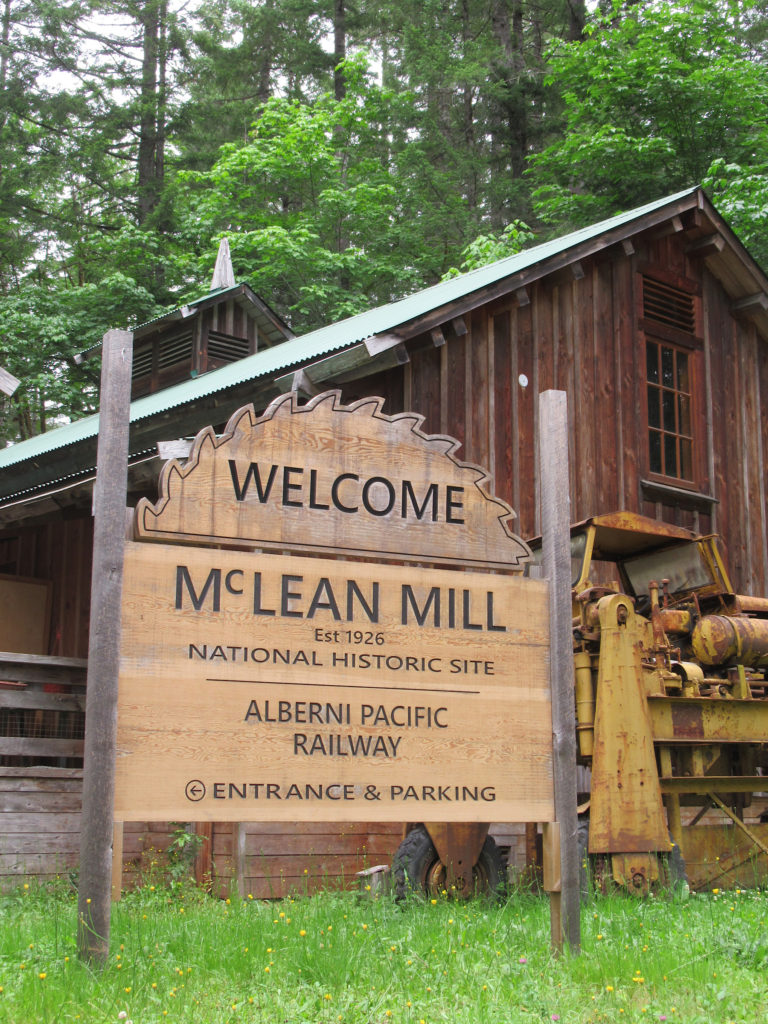
Relevant Links for Further Info
- Read up on the real history behind the naming of Forbidden Plateau here.
- For more information and directions to Pipers Lagoon Park, check this website.
- The full story of the shacks on Shack Island can be found in this article.
- If you want to take advantage of low tides for your adventures, be sure to check out the tide charts.
- Look here for more details about Rathtrevor Beach.
- This page has additional information about Jack Point and Biggs Park.
- A good map for accessing Cumberland Potholes can be found at AllTrails.
- Last but not least, if you’re like me and want to visualize the past, check out this walking tour pamphlet for Cumberland’s Chinatown.



Leave a Reply